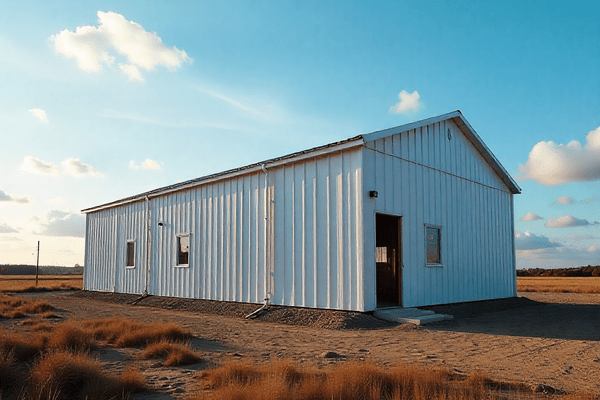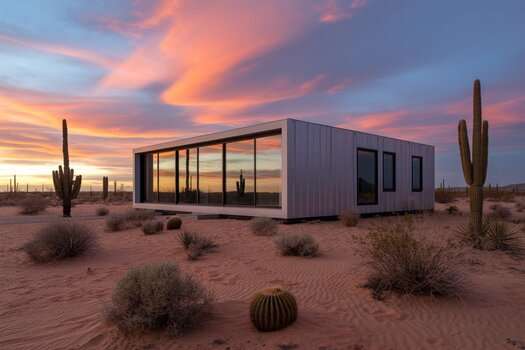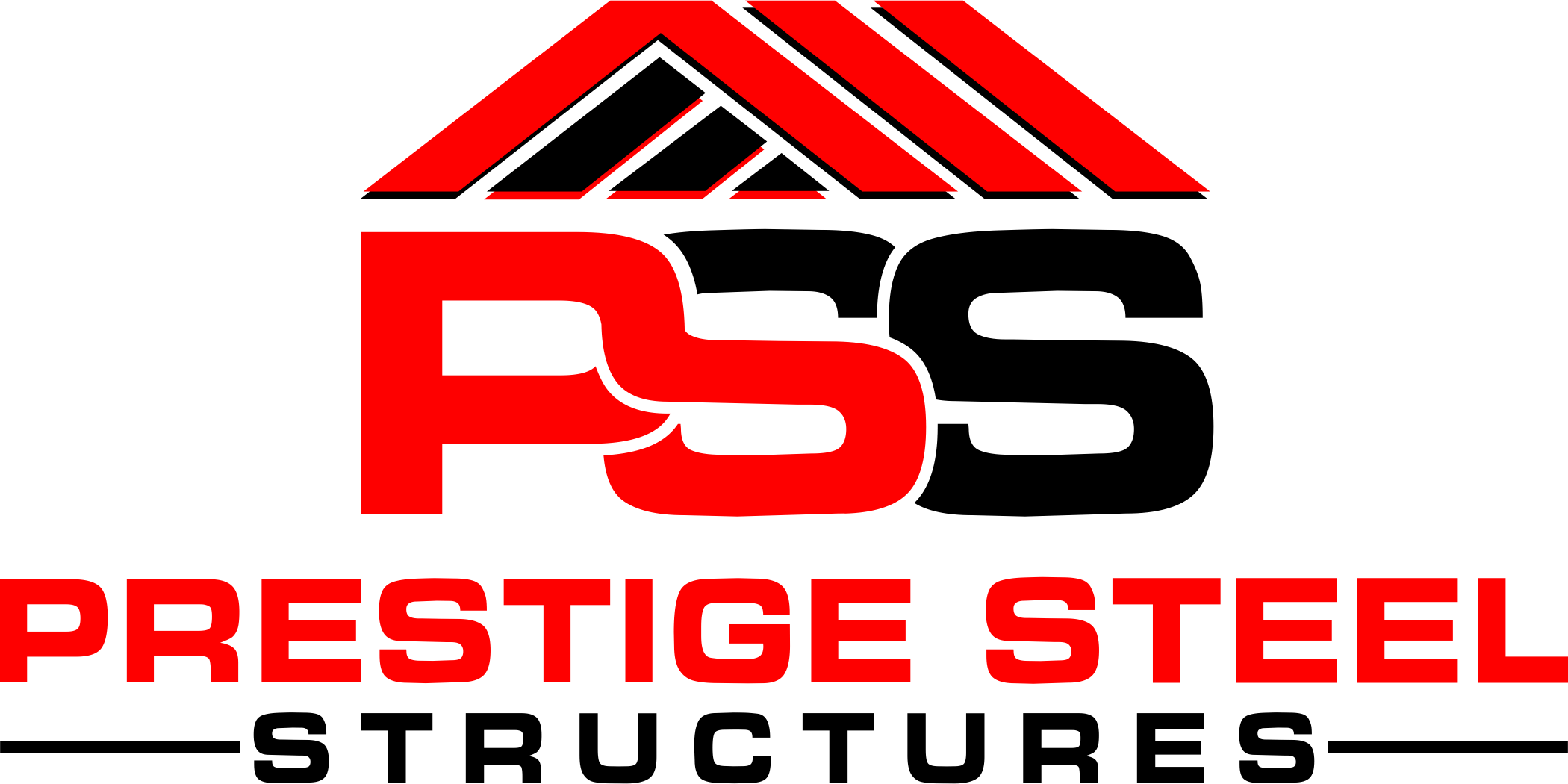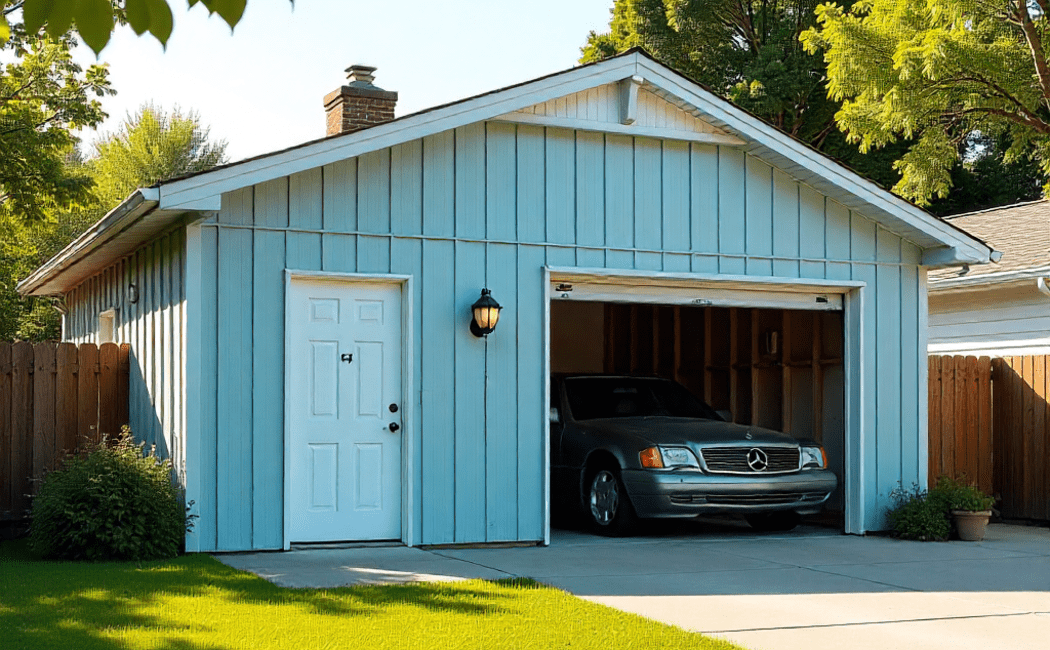Prefab steel buildings cost 20-40% less than traditional construction due to factory prefabrication, reduced labor requirements, and material efficiency. These structures offer significant savings through streamlined manufacturing processes, faster installation times, and minimal ongoing maintenance needs. Key cost advantages include predictable steel pricing, comprehensive warranty coverage, and lower insurance premiums compared to wood-frame buildings. Property owners typically see immediate savings on construction costs plus long-term benefits from energy efficiency and durability that can last 50+ years.
These buildings require significantly less labor during the construction process. Pre-engineered components arrive ready for assembly, reducing installation time dramatically. The streamlined construction timeline translates directly into lower labor costs for property owners seeking prefab steel buildings.
Material costs represent another major advantage of metal construction. Steel components are often more affordable than traditional building materials like wood or concrete, as confirmed by the Metal Building Manufacturers Association. The durability of metal also means fewer replacement costs over the building’s lifetime.
Maintenance requirements stay minimal throughout these structures’ operational years. Metal buildings resist common issues like pest damage, rot, and weather deterioration. This resistance reduces ongoing repair expenses and extends the building’s useful life significantly for commercial steel buildings.
Energy efficiency provides additional long-term savings for building owners. Modern metal structures can accommodate superior insulation systems effectively, following guidelines from the National Institute of Standards and Technology. These insulation capabilities help reduce heating and cooling costs throughout the year.
The versatility of metal construction allows for customized designs without premium pricing. Buildings can be modified or expanded more easily than traditional structures, making prefabricated buildings suitable for diverse applications and changing business needs.
Insurance premiums often cost less for metal buildings due to their fire resistance. Many insurance providers offer reduced rates for these safer structures, particularly for metal RV covers and similar applications. The combination of lower premiums and reduced risk creates substantial financial benefits.

Prefab Steel Building Construction
Prefabricated construction offers significant advantages over traditional building methods. Steel structures undergo extensive factory preparation before arriving at your site, adhering to standards set by the American Institute of Steel Construction. This controlled manufacturing process delivers multiple cost-saving benefits for construction projects.
Faster Construction and Lower Labor Expenses
Steel buildings benefit from comprehensive prefabrication processes in controlled factory environments. This manufacturing approach reduces on-site construction time and associated labor costs significantly, following OSHA safety regulations for steel construction. Here’s what prefabrication typically includes:
- All structural framing gets cut precisely according to architectural specifications
- Frame sections arrive pre-assembled for quick installation upon delivery
- Insulated wall panels come ready-made to complete exterior surfaces efficiently
- Roof trusses undergo partial assembly before shipment to your location
- Quality control measures ensure consistent results throughout the manufacturing process
Factory-controlled construction minimizes material waste and reduces unexpected delays during installation. This streamlined approach translates into substantial savings on both labor and material expenses for those looking to buy prefab metal buildings.
Simplified Purchasing Process
Working with comprehensive steel building providers eliminates multiple vendor relationships and associated complications. A single company handles design, manufacturing, delivery, and installation support for your project, as recommended by structural engineering programs. This approach offers several advantages:
- One contract covers all aspects from initial design through final construction
- Direct manufacturer relationships eliminate middleman markups and additional fees
- Streamlined communication reduces project delays and miscommunications significantly
- Single-point responsibility ensures accountability throughout the entire construction process
- Consolidated billing simplifies budget management and payment processing procedures
Traditional construction often requires separate contracts for materials, delivery, and labor services. This integrated approach provides better cost control and project management efficiency for prefab metal buildings.
Stable Material Pricing
Steel pricing remains more predictable compared to volatile lumber markets in recent years. This stability provides better budget planning and cost estimation for construction projects, as noted by the Metal Construction Association. Key pricing advantages include:
- Steel costs fluctuate less dramatically than traditional wood framing materials
- Long-term price stability allows for accurate project budgeting and planning
- Reduced risk of mid-project cost increases that can derail construction budgets
- Contractors increasingly choose steel over wood due to pricing predictability
- Material availability stays consistent without seasonal supply chain disruptions
Wood framing costs have experienced dramatic increases that make steel construction more attractive. Steel’s pricing stability makes it an increasingly popular choice for various building applications, including commercial metal buildings in Tampa.

Prefab Steel Building Advantages
Prefabricated steel buildings offer numerous benefits that make them attractive options for various construction projects. These structures combine modern engineering with efficient manufacturing processes to deliver superior performance characteristics, supported by research from Michigan Tech’s structural engineering programs. Advanced prefab construction methods ensure consistent quality while providing long-term value for property owners.
Modern Steel Building Performance
Contemporary steel structures offer superior energy efficiency compared to outdated perceptions of metal construction. Advanced design features and innovative materials have transformed these buildings into highly efficient structures, as promoted by Build Using Steel. Modern steel buildings incorporate cutting-edge technology to optimize energy consumption and comfort levels. Here are the key performance features:
- Insulated wall panels provide excellent thermal barrier protection throughout all seasons
- Reflective roofing systems reduce heat absorption and lower cooling costs significantly
- Advanced ventilation systems maintain optimal air circulation and temperature control consistently
- Energy-efficient window and door systems minimize heat transfer and air leakage
- Integrated insulation solutions exceed traditional building standards for thermal performance
- Smart building technologies can be easily incorporated for enhanced energy management
These performance improvements result in reduced utility bills and improved indoor comfort conditions. Steel buildings now rival or exceed traditional construction methods in energy efficiency ratings, particularly for commercial steel buildings in Naples.
Low Maintenance Requirements
Steel construction delivers exceptional long-term value through minimal maintenance needs over decades of use. Property owners appreciate the reduced upkeep costs and time investment required for these structures, following best practices from University of Toronto’s structural engineering research. Maintenance advantages make steel buildings increasingly popular for various applications. Key maintenance benefits include:
- Powder-coated finishes provide decades of protection without frequent repainting needs
- Exterior surfaces resist rust, corrosion, and weathering under normal environmental conditions
- Roofing systems require minimal repairs and can withstand severe weather events
- Wall systems clean easily with basic maintenance equipment and standard cleaning solutions
- Structural components resist pest damage, rot, and other common building deterioration issues
- Foundation requirements stay minimal due to lighter overall building weight
Reduced maintenance translates into significant cost savings throughout the building’s operational lifetime. These structures maintain their appearance and functionality with minimal owner intervention required, making prefabricated metal garages and similar structures excellent long-term investments.
Key Takeaways
Prefab steel buildings deliver unmatched value through their combination of cost efficiency, durability, and performance advantages. Property owners benefit from reduced construction time, lower maintenance costs, and superior energy efficiency that traditional building methods cannot match, supported by research from University of Minnesota’s structural engineering programs.
The comprehensive advantages of steel construction make it the logical choice for diverse building applications. From stable material pricing to simplified purchasing processes, those who buy prefab steel buildings enjoy long-term financial benefits that extend well beyond the initial investment, whether for prefab metal garages, prefab steel garages, or larger commercial applications.
Frequently Asked Questions
Do I need building permits for my prefab steel building?
Most areas require building permits for steel structures, though rural locations may have exemptions for agricultural buildings. Contact your local building department to determine specific permit requirements for your project location, especially when you buy prefab metal garages.
What type of foundation is required for steel buildings?
All steel buildings need concrete foundations, with common types including slab-on-grade, pier foundations, and perimeter walls. Your choice depends on soil conditions, building size, and intended use of the structure, particularly for those looking to buy prefab steel garages.
Can I install a prefab steel building myself?
Yes, many steel building kits are designed for DIY installation with basic tools and helpers. Smaller buildings under 3,000 square feet are especially suitable for self-assembly by experienced DIY builders seeking Prestige Steel Structures solutions.
How long does it take to erect a prefab steel building?
A typical 30×40 steel building can be erected by a four-person crew in 3-6 days. Smaller structures may take just a weekend, while larger buildings require more time and equipment.
What warranty coverage comes with prefab steel buildings?
Most manufacturers offer comprehensive warranties, including 50-year structural warranties, 25-year panel warranties, and rust protection guarantees. Some companies provide lifetime warranties on painted panels for added protection.


